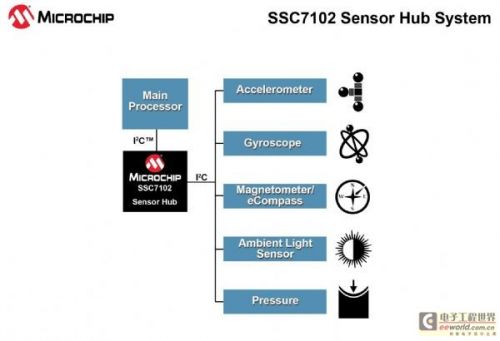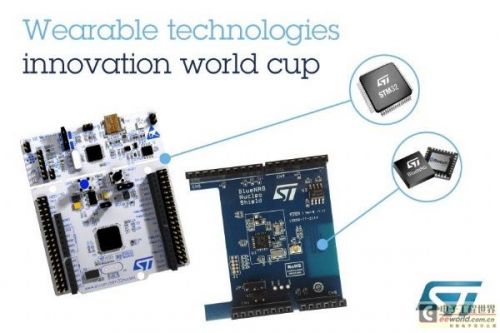The wearable device market continues to have a fever. According to Cisco research, there will be a $25 billion global wearable application market in 2015. It is expected that the wearable market will expand and expand in 2020, and the demand for the plant will increase sharply. The more chip companies are actively investing in microcontroller solutions for wearable device requirements...
As wearable products continue to be refurbished, various new styles of wearable products have been introduced. At present, international manufacturers such as Samsung, Sony, Google, Apple, Qualcomm, Intel, and Freescale are competing to launch wearable devices or use them for wearable devices. The solution, especially at the 2014 CES (Consumer Electronics Show) show, the large-scale presentation of wearable technology products in the two major exhibition areas of Wrist Revolution and Fashion Ware, is also the announcement of the upcoming news of the wearable device market in 2014.
Medical grade wearable equipment requires high
Inspecting the current wearable device style, there are two main product categories, one is combined with telemedicine and physiological information monitoring, and the other is a personal physiological state sensor based on sports and personal health management. In addition to the new smart watches, smart jewelry and other special products, of course, these smart watches, jewelry, and most of them have some of the wearer's physiological state sensing function, not just a smart watch or jewelry use.

Wearable devices such as smart watches and smart wristbands are also more common with smart phones. The sensing functions are more and more diverse, and the use of sensing modules optimized for wearable applications will reduce development time. Microchip

Wearable apps are becoming more popular, and the chip industry is not only stepping up to launch the corresponding MCU solution, but also to win the popularity by sponsoring world-class sports events. ST
Telemedicine type wearable products, because the products need to be placed in the medical application market, are more vertically integrated market products, and the medical equipment in the safety and testing requirements are relatively harsh compared to 3C supplies, the general industry is not easy to enter the medical The electronic market, and wearable devices that only have personal health management and physiological information monitoring purposes, are less active in medical applications, and are currently an active application market for wearable device manufacturers.
Wearable solutions need to meet low power and low cost requirements
The development direction of smart product wear and tear, and the product's appearance is further limited to functional requirements that must be able to make the wearer unburdened, long-lasting battery life, which also means that wearable products need to be maintained under extremely light weight. Basic operation and sensing performance.
Although most of the currently available computing platforms can meet the development requirements of wearable products in terms of power consumption performance, computing performance, and product size, in reality, in the face of smart watch product development, many difficult technical integration problems will still be encountered. According to the observation of smart watch products, smart watches have been actively invested by Sony, Samsung, Google and a few new entrepreneurs. There are quite a few technical bottlenecks in the current smart watch products, for example, how to make battery life reach 2 ~More than 3 days of continuous use without charging, how the display screen can be clearly distinguished outdoors, how the level of the watch case can reach the jewelry level, etc.
ARM MCU has the potential to develop wearable applications
In the battery life part, most of the existing smart watches use ARM-based integrated chips, which consumes very low power. Instead, it is difficult to solve the power consumption problem of the display screen. The existing commercial products are observed, and the main application of wearable smart watches. E-Ink, OLED, LCD are mainly three small-sized displays, of which OLED can be operated without backlight module, which can greatly reduce the thickness of display screen and is now the mainstream screen option for color display smart watches.
However, in the smart watch products with color display screens, although the color effect is more attractive, in fact, most of the battery life can only last for 1 to 2 days, and the battery life requirements for wearable products are mostly basic standards. There are still quite a few improvements in the effect and improvement in battery performance.
In addition to power consumption issues, smart watches are still in the initial stage of development, unlike embedded systems used in tablets and smart phones, which have been developed for many years, even though Google recently released embedded applications for wearable applications. System, but in fact related development resources and system platform optimization still take time.
Smart watch product challenge, the price is too high, affecting market expansion
Smart watches need to be improved not only in terms of power consumption, system optimization, etc. Smart watches need to compete with conventional watches in terms of commercialization goals, which means that the size, weight and appearance of smart watches need to be close to the general watch. In order to be regarded as a more complete wearable product, the size of the smart watch that has been introduced nowadays hinders the need to set up larger batteries and loading function modules. The volume of the product is mostly larger than that of the general watch, and the space for improvement is still quite large.
In contrast, wearable personal sports recorders, smart wristbands, and other products that do not require a surface display display, commercially available smart wrists with LED, OLED display matrix or small LCD design, display screen does not need Presenting a large amount of data, only need to display such as cumulative pace, motion parameters, etc., the screen consumes relatively little power, only need to design energy-saving optimization on the platform, system and display screen, most of the products can reach 3 to 5 days of battery life, phase Compared with smart watches, it can meet the user's long-term wear record physiological data needs.
Smart wristbands have low cost and diverse products into a wearable product market
Because the function of the smart wristband is simple, it needs to be able to connect with the smart phone to display value-added applications such as SMS, email, SNS (Social Network Services) information, etc., so the choice of embedded system can be more Simplified system platform selection. Looking at the mainstream of wearable device products, the smart wristband can meet the needs of end users in terms of product characteristics, especially the novel application integration and low terminal price advantage, which has more explosive growth space in the market.
If you think about the low power consumption and low cost, the currently available intelligent computing platform, only the ARM MCU microcontroller platform has better import advantages, plus the ARM architecture performs well in power consumption, and the embedded system can be used. The Android platform common to smart phones also has a large number of Linux or other embedded system platform development resources, the development conditions are relatively flexible and diverse, and even the functions of the smart wristband itself are relatively limited, and there is not too much in developing products. Large firmware upgrades or storage space expansion requirements can even reduce the integration requirements of wireless networks or low-power Bluetooth wireless transmissions, making the product cost advantage of smart bracelets higher.
Chip manufacturers have launched a solution platform to grab the wearable medical application market
Looking at the product requirements of smart wearable devices, basically do not deviate from the requirements of miniaturization, low power consumption, interconnectivity and sensing component integration, especially wearable products are mainly based on human body wear applications, products must reach weight and body positive The status of the product can meet the product design requirements, and more and more micro-controllers are developing application platforms for wearable applications, allowing product developers to quickly build the required functions on the application platform. For example, Freescale has introduced the WaRP platform, which is designed for wearable devices, and is optimized for cost, size, and power consumption.
WaRP platform in terms of volumetric design, WaRP development board area is only 38x14mm, running power optimization using composite power management architecture, select the lowest operating ARM Cortex-A9 with Cortex-M0+ integrated sensor Hub architecture, while WaRP The platform can also use an LCD display or a lower power E-Ink display screen, while supporting Wi-Fi and Bluetooth 4.0 wireless communication on the platform Netcom architecture.
In addition to Freescale's WaRP platform, STMicroelectronics is optimistic about the wearable medical market. Currently, the wearable medical team is actively taking advantage of the integration of software, hardware and systems to attack the health care wearable application market. In addition, the mobile phone chip manufacturer Qualcomm was established in 2011. Qualcomm Life is actively investing in the health care and intelligent market, preparing to take advantage of its own core technologies in wireless communication and cutting into the mobile health care application market.
Customers looking to customize electronic products for their business applications, we are here to understand your needs and help you with electronic hardware design. We have engineering resources to assist your business with electronic work. For any level of electronics problem you are facing right now, we have experts who can solve your problem.
PCB Prototype,PCB Prototype Design,PCB Gerber Design,PCBA Program Development,PCB Schematic
Huizhou Liandajin Electronic Co., Ltd , https://www.ldjpcb.com